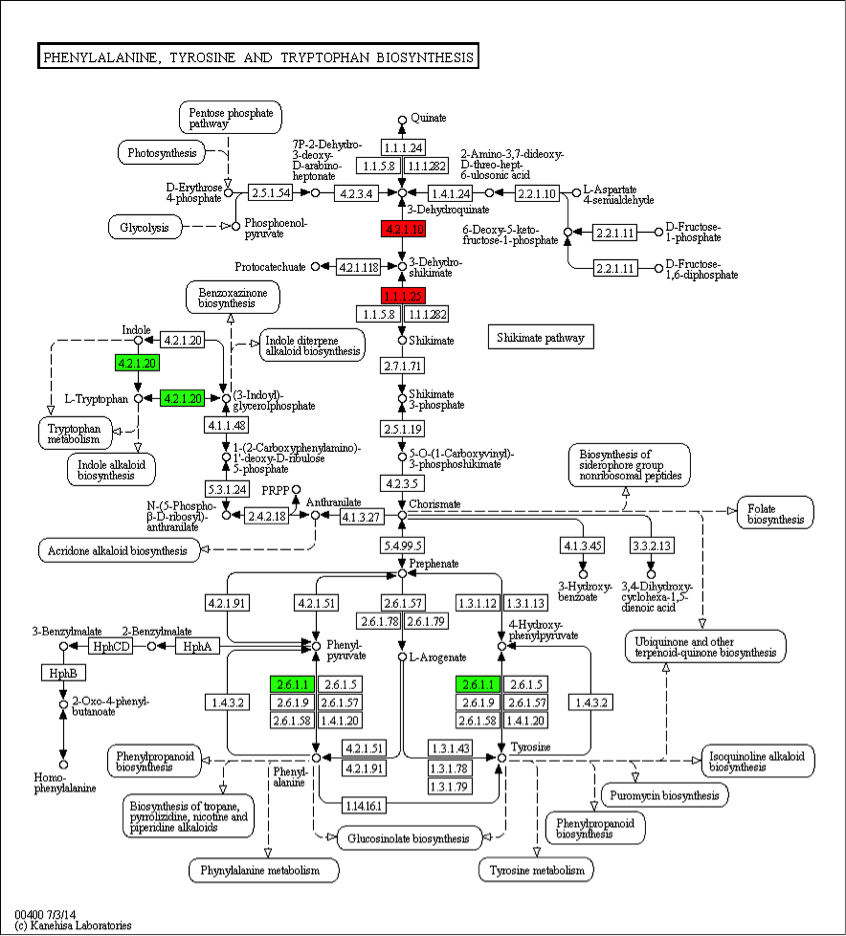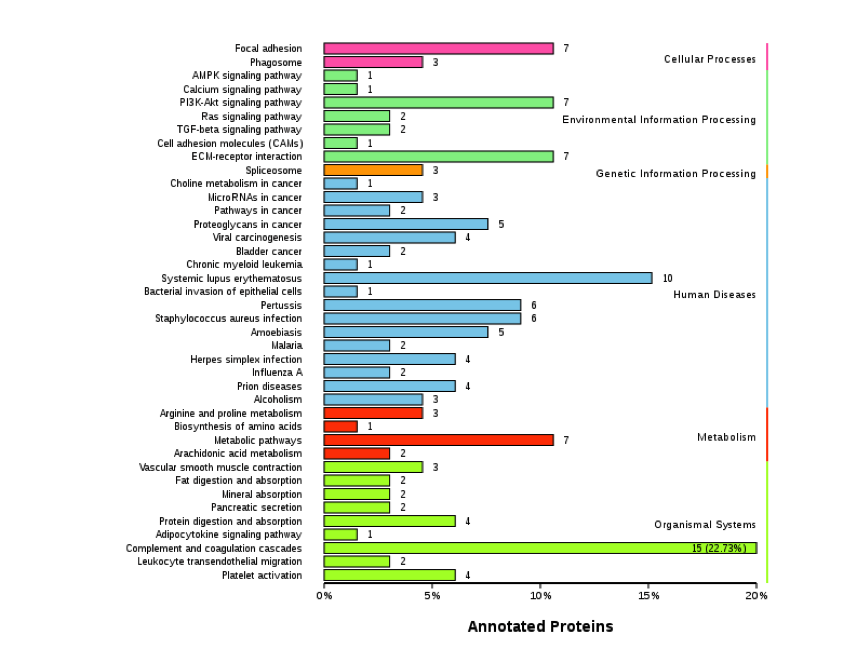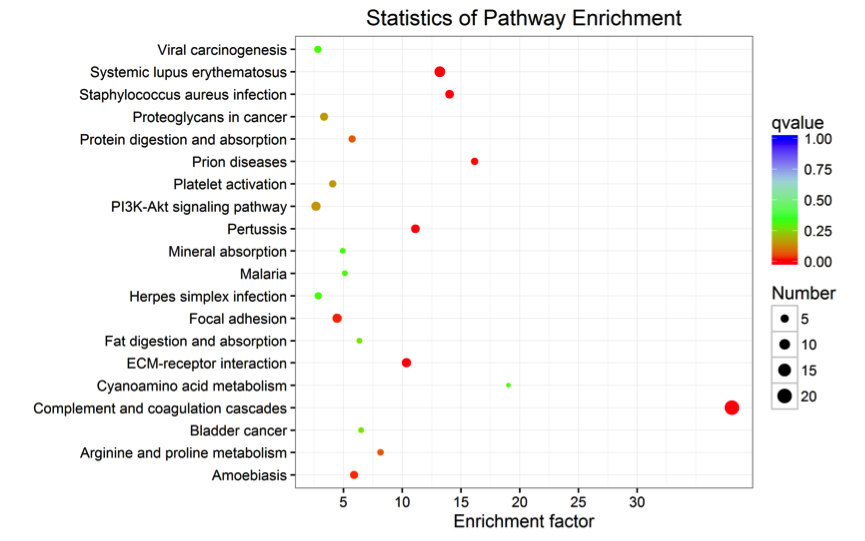KEGG Pathway Annotation and Enrichment Analysis
The KEGG (Kyoto Encyclopedia of Genes and Genomes) database is a database for systematically analyzing the metabolic pathways of gene products in cells and their functions. KEGG facilitates the study of genes and expression information as a comprehensive network. KEGG integrates data from genomes, chemical molecules, and biochemical systems, including metabolic pathways (PATHWAY), drugs (DRUG), diseases (DISEASE), gene sequences (GENES), and genomes (GENOME).
1. Statistics of KEGG Mapping Results for All Identified Proteins

Statistics Table of Protein Mapping Results
2. Annotation Statistics of KEGG Results for All Identified Proteins

Statistics Table of KEGG Annotation Results
3. KEGG Pathway Annotation Statistics
In living organisms, different gene products coordinate with each other to perform biological functions. Pathway annotation analysis of differentially expressed genes helps to further interpret gene functions. The pathway annotation map of differentially expressed proteins is shown below:

Figure 1 KEGG Annotation Pathway Map
Note: Compared to the control group, enzymes marked in red boxes are related to up-regulated proteins, and those in green boxes are related to down-regulated proteins. Enzymes marked in blue boxes are related to both up-regulated and down-regulated proteins. The numbers within the boxes represent enzyme numbers (EC numbers), and the entire pathway consists of complex biochemical reactions catalyzed by various enzymes. In this pathway map, enzymes related to differentially expressed genes are highlighted in different colors. Based on differences between study subjects, the focus is on the differential expression of proteins related to certain metabolic pathways, explaining the root causes of phenotypic differences through pathways.
4. KEGG Pathway Classification
The annotation results of differentially expressed genes in KEGG are classified according to pathway types in KEGG, as shown in the figure below:

Figure 2 KEGG Classification Chart of Differentially Expressed Proteins
Note: The vertical axis represents the names of KEGG metabolic pathways, and the horizontal axis represents the number of proteins annotated to the pathway and the proportion of these proteins out of the total number of annotated proteins.
5. KEGG Pathway Enrichment Analysis
Analyzing whether differentially expressed proteins are over-presented in a specific pathway is called pathway enrichment analysis of differentially expressed proteins. We used Kobas software for KEGG pathway enrichment analysis of differentially expressed proteins. The results of the KEGG pathway enrichment analysis for differentially expressed proteins are shown in the figure below

Figure 3 Statistical Diagram of KEGG Pathway Enrichment for Differentially Expressed Proteins
Note: Each point in the figure represents a KEGG pathway, with pathway names on the left axis. The horizontal axis represents the Enrichment Factor, which is the ratio of the proportion of differentially expressed proteins annotated to the pathway to the proportion of proteins of that species annotated to a pathway. The larger the enrichment factor, the more reliable the significance of enrichment of differential proteins in that pathway.
How to order?





